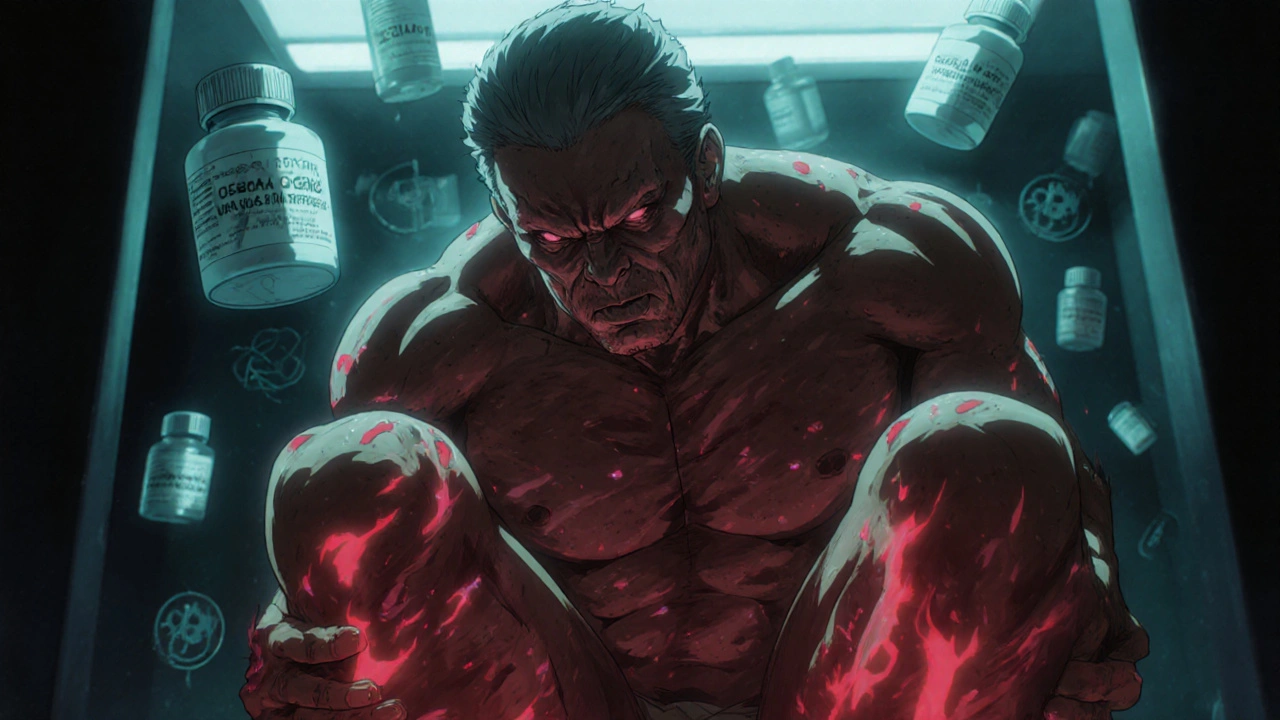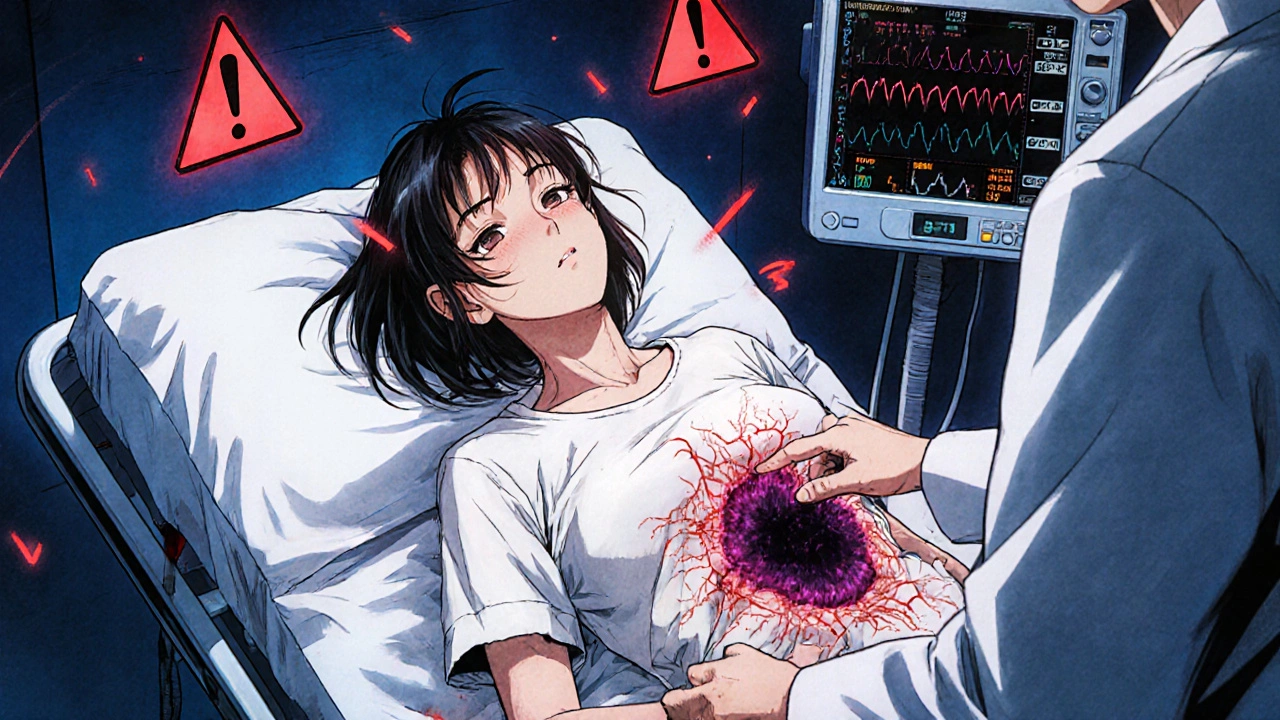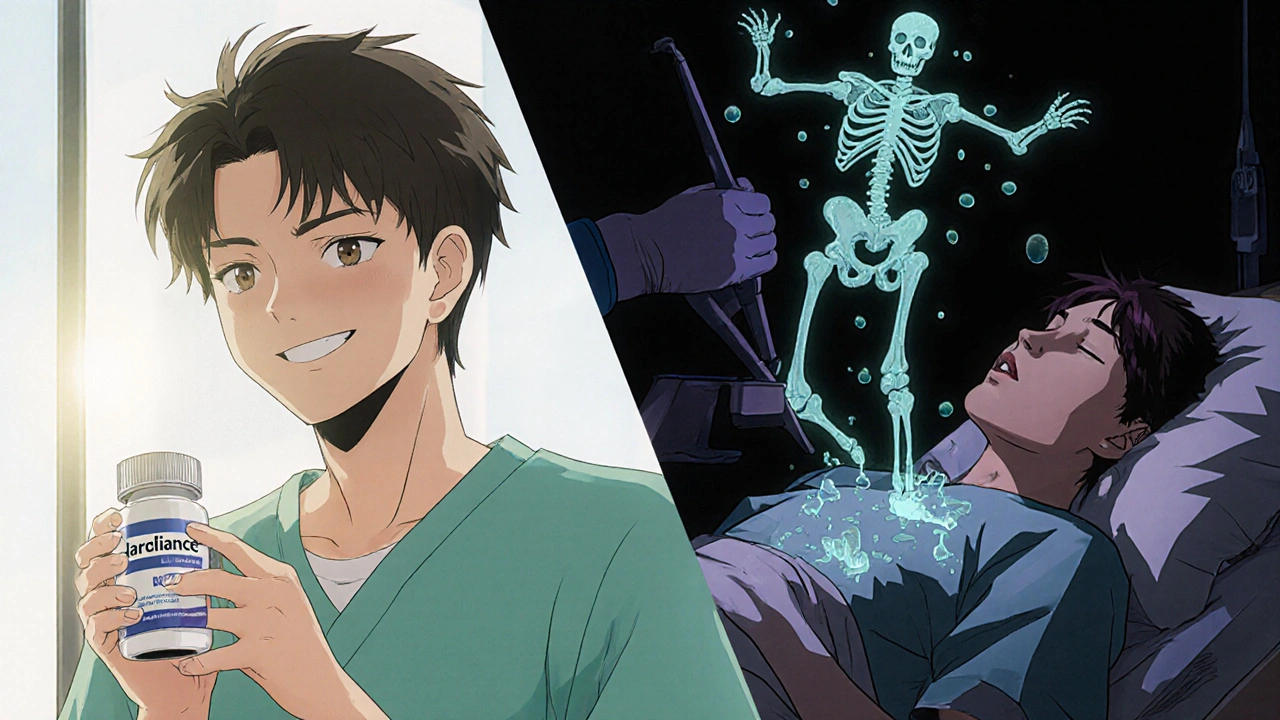Fournier’s Gangrene and Diabetes Medications: Emergency Signs You Can’t Ignore

Fournier's Gangrene Symptom Checker
Emergency Signs Checklist
If you're taking SGLT-2 diabetes medications (Jardiance, Farxiga, Invokana, or similar), check for these emergency signs immediately. Do NOT wait.
Results will appear here after checking symptoms.
When you’re managing type 2 diabetes, taking a medication like Jardiance, Farxiga, or Invokana can feel like a win. These drugs help lower blood sugar, protect your heart, and slow kidney damage. But there’s a rare, fast-moving danger tied to them-one that can turn from mild discomfort to life-threatening in hours. It’s called Fournier’s gangrene, and if you’re on an SGLT-2 inhibitor, you need to know the warning signs before it’s too late.
What Is Fournier’s Gangrene?
Fournier’s gangrene isn’t just another infection. It’s a violent, necrotizing fasciitis that eats away at the skin and tissue around your genitals and anus. Bacteria invade, multiply fast, and destroy blood vessels, cutting off oxygen to the tissue. The area turns black, swells, and starts to decay. It’s rare-only about 1 in 10,000 men on these medications develop it-but when it happens, it kills.
What makes this different from a typical skin infection? Speed. Most people don’t realize how fast it moves. One day, you have mild pain or itching. The next, you’re in excruciating pain, running a fever, and your skin feels like it’s on fire. By the time you see a doctor, the infection may have already spread deep into your pelvic muscles. That’s why every hour counts.
Which Diabetes Medications Are Linked to This?
The link isn’t with all diabetes drugs. It’s specific to a class called SGLT-2 inhibitors. These include:
- Canagliflozin (Invokana)
- Dapagliflozin (Farxiga)
- Empagliflozin (Jardiance)
- Ertugliflozin (Steglatro)
They work by making your kidneys flush out extra sugar through urine. That sounds good-until you realize that sugar in your urine feeds bacteria. It’s why yeast infections and UTIs are common side effects. But in rare cases, that same environment lets dangerous bacteria take hold and spread upward into the genital tissues.
The FDA first flagged this in August 2018 after 12 cases were reported since 2013. Since then, reports have come in from around the world. New Zealand’s Medsafe updated its warnings in December 2022. The UK’s MHRA and the European Medicines Agency followed with similar alerts. These drugs are still prescribed because their benefits for heart and kidney health are real. But the risk is no longer theoretical-it’s documented, tracked, and now part of every prescribing guide.
Why Are Women Getting This Too?
For decades, doctors thought Fournier’s gangrene only affected men. That’s what textbooks said. But since SGLT-2 inhibitors became common, that changed.
One-third of reported cases in Europe were in women. In the U.S., women under 50 have been diagnosed with this condition after starting Jardiance or Farxiga. One case involved a 71-year-old woman with a large abscess in her perianal area, foul-smelling discharge, and a BMI of 34.2. She had diabetes, was overweight, and had a minor skin injury near the area-perfect conditions for bacteria to take over.
Why? Because the infection starts where the sugar is-around the urethra, vagina, or anus. It doesn’t care about gender. If your body is leaking sugar in your urine or sweat, bacteria have a feast. And if you have diabetes, your immune system is already struggling to fight back.

Emergency Signs: Don’t Wait
If you’re on one of these medications and notice any of these symptoms, go to the ER immediately. Don’t call your doctor. Don’t wait until morning. Go now.
- Severe pain or tenderness in the genital or anal area
- Redness, swelling, or warmth that spreads quickly
- Fever above 101°F (38.3°C)
- Foul-smelling discharge from the genitals or anus
- A large, hard lump or abscess that feels like it’s under the skin
- Pain that feels worse than the physical signs suggest
- General feeling of being extremely unwell (malaise)
Some patients describe it as “my private area is on fire” or “I can’t sit down, I can’t walk.” That’s not normal. That’s not a yeast infection. That’s tissue dying.
The FDA says patients often have “pain out of proportion to the physical exam.” That means even if the doctor doesn’t see much redness yet, the pain alone is a red flag. Trust your body. If something feels wrong, push for an emergency evaluation.
What Happens If It’s Caught Early?
If caught in time, treatment is aggressive-but survivable. It requires three things:
- Stopping the SGLT-2 inhibitor immediately
- High-dose IV antibiotics
- Emergency surgery to cut out dead tissue
Studies show that 63% of patients need multiple surgeries. 79% end up in the ICU. About 16% die, even with the best care. That’s higher than the general FG mortality rate, which ranges from 7.5% to 50%. Why? Because these patients often have other health problems-diabetes, obesity, older age-that make recovery harder.
One patient in a 2021 case report had four surgeries over three weeks. Another lost part of his penis. A woman in Australia needed a colostomy after the infection destroyed tissue around her rectum. These aren’t rare outcomes-they’re expected when treatment is delayed.
And here’s the catch: even if you survive, your life changes. Scarring, nerve damage, sexual dysfunction, and chronic pain are common. Some people need reconstructive surgery years later.
What Should You Do Now?
If you’re taking one of these drugs and have no symptoms, don’t panic. The risk is low. But do these three things:
- Know the signs. Memorize the list above. Show it to your partner or caregiver.
- Check daily. Look in the mirror after showering. Look for redness, swelling, or unusual discharge.
- Speak up. Tell your doctor you’re aware of this risk. Ask them to document it in your file.
Doctors are now required to warn patients about this when they prescribe SGLT-2 inhibitors. If they didn’t, ask why. You have the right to know the full picture.
If you’ve been on one of these medications for more than a few months and have never had a genital infection, you’re likely fine. But if you’ve had recurrent yeast infections or UTIs, your risk is higher. Talk to your doctor about switching to another class of diabetes meds-like metformin, GLP-1 agonists, or insulin-especially if you’re overweight, over 60, or have poor circulation.

Is It Safe to Keep Taking These Medications?
Yes-if you’re informed and monitored. The FDA, EMA, and Medsafe all agree: the benefits still outweigh the risks for most people. These drugs reduce heart failure hospitalizations and kidney failure. They help people live longer.
But risk isn’t the same for everyone. If you’re a woman under 50, have obesity, diabetes complications, or a history of skin infections, your risk profile is different. You might be better off on a different medication. Don’t stop cold turkey-talk to your doctor. But don’t assume you’re safe just because you’ve been on it for a year.
Real-world data shows that 84% of patients who developed Fournier’s gangrene stopped the drug after diagnosis. That’s the right move. But stopping alone isn’t enough. You need surgery and antibiotics. And you need them fast.
What If You’re Already Diagnosed?
If you’ve had Fournier’s gangrene and were on an SGLT-2 inhibitor, you should never take one again. The risk of recurrence is too high. Your doctor will need to find another way to control your blood sugar. Options include:
- Metformin (first-line for most people)
- GLP-1 receptor agonists (like Ozempic or Mounjaro)
- Insulin (if your pancreas can’t keep up)
- DPP-4 inhibitors (like sitagliptin)
Many of these alternatives don’t carry the same infection risk. Your doctor can help you pick one based on your heart, kidney, and weight goals.
Final Thought: Knowledge Is Your Shield
Fournier’s gangrene is rare. But it’s real. And it doesn’t care if you’re healthy, young, or active. If you’re on an SGLT-2 inhibitor, you’re in a group that’s been flagged for this danger. That doesn’t mean you should stop your medication. It means you should be alert.
Check your body. Know the signs. Act fast. This isn’t about fear-it’s about control. You’ve managed your diabetes this far. Now, you can protect yourself from one more threat.